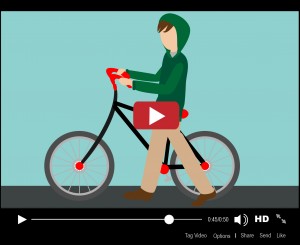
Social media is nothing new — some may even grow tired of the constant friend requests and circulating posts of wedding pictures and cat videos. But humanitarians have used it in an innovative way to do good in crises.
Facebook and Twitter have been key parts of the recovery process in the Philippines since the first day Typhoon Haiyan devastated the country. Despite heavy damage to homes, buildings and cell towers, civilians and volunteers have been capturing the damage with their phone cameras and uploading the images on Twitter.
The Qatar Computing Research Institute has been browsing all the tweeted images in the Philippines to examine which areas have been impacted the most and require the most aid. QCRI uses the MicroMappers project, which allows users to rate the amount of destruction seen in each image, which is also geographically tagged. These tweets are also categorized to determine if the tweet is a personal plea for assistance or a report on either property damage or shortages of food and medical supplies.
Tweeters and MicroMappers staff have uploaded and scanned over 30,000 tweets, according to the MicroMappers blog. QCRI has teamed with the United Nations and has used this information to navigate the UN’s emergency response unit’s efforts in the Philippines.
Facebook was also a useful tool for the owner of Taylor’s Bike Shop in Provo after one of their most expensive bikes was stolen during the night. A boy shattered the glass windows to break into the shop, just a few blocks away from campus.
The police were informed within minutes of the incident by someone who heard the glass break, and they started their investigation immediately. However, the owner also decided to post security camera footage of the break-in on Facebook to increase awareness.
“Mike (the shop’s owner) put it on Facebook, and it took off like wildfire,” said Brandon Knight, the manager of the shop.
The weekly activity on the company’s Facebook page increased by a staggering 833,160 percent above the average on the week of Nov. 5. The video post reached over 41,000 people on Facebook through comments and shares that week.
“You know, it actually was a cool-looking video,” Knight said. “You get to see the glass shatter and him breaking in.”
Provo Police also actively engages in its own Facebook and Twitter accounts, using them as a means to quickly publicize press releases and to recruit help in ongoing investigations. Lieutenant Mathew Siufanua manages the police’s social media accounts, and said his posts reach a large audience.
“I think we have a good following,” Siufanua said. “The media has learned to watch Facebook and our Twitter very closely, and they check it every day.”
The police drew large support from the public for a missing child case last year. After the police had gathered information from the family, they sent out a press release, which in turn was posted on Facebook on the same day the child went missing. This helped the police attract volunteers for the search, but when the family of the missing child shared it as well, Siafanua said the press release “went viral.”
“We had 300 or so people showing up at the house trying to help find her,” Siufanua said.
After so many people learned how they could help because of social media, the police were able to find the child the next day.
Researchers, law enforcement personnel and even victims in an accident connect through social media and combine their efforts to improve the quality of life in a crisis.




